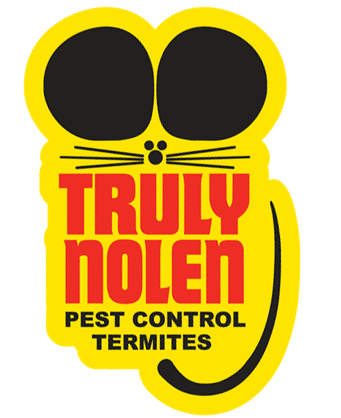
Here we focus on the elimination of bee swarms not protected by a cavity or constructed comb or hive.
Most feral bee colonies in the southern United States are of the Africanized variety. As this variety serves no purpose and poses a danger to humans and animals, eradication is recommended. At certain times of the year, part of the colony separates to form a swarm and flies off in search of a new home. While a swarm will land on a surface to rest for a period of time before moving on, the presence of this mass may present challenges and cause undue stress to employees and customers.
The INSPECTION process begins with a customer interview, followed by a thorough visual inspection for pest IDENTIFICATION and DETERMINATION of a course of action. Because bees pose a danger, the pest professional does not ask the customer to accompany him during the inspection phase.
- Safety – The pest professional puts on his bee suit and remains suited up during the entire process. He secures the area based on the location and sting potential to passersby.
- Cluster knockdown – If possible, the tech places a plastic tarp under the target area to collect dead & dying bees. Using soapy water (1 cup per gallon – Dawn dishwashing soap preferred) in a power sprayer or backpack sprayer, the tech quickly coats the exterior of the swarm to kill the bees on the outside of the ball. He continues to spray and knock down with the wand those bees on the outside of the ball as they are saturated and begin dying. The process continues until all bees are coated with the soapy solution.
- Dead bee removal – The pest professional collects most of the dead bees and places them in a plastic bag. He uses a dust pan and brush/broom to clean up if the bees have fallen on a solid surface. He then seals the bag and takes it off-site for disposal.
RECOMMENDATION – Monitoring Coverage
- For smaller commercial properties – Scout Trap Placement & Monitoring Program – A non-toxic pheromone based trap is placed on the property (one trap per 2,000 square feet of structure). It attracts and traps scout bees so that they cannot mark the site, return to the swarm and lead it to this location. The scout trap is monitored quarterly. Guarantee: If a bee hive appears on a property that has a scout trap, it is covered under the quarterly service plan at no additional cost. A twelve month agreement is required, with a discount available when purchased with existing or new reoccurring commercial pest control agreement.
- For larger properties – Swarm Trap Placement & Monitoring Program – For larger properties, like apartment complexes and golf courses. A set of pheromone based bucket type units attracts the swarm into a vessel. The bucket acts as the perfect location for a new hive and an ideal containment system so that the infestation can be effectively exterminated. A twelve month agreement is required, with discount available when purchased with existing or new reoccurring commercial pest control agreement.
COMMUNICATION – The pest control professional understands the importance of communication with his customer. Once the job is completed, he discusses with the customer, either in person or by phone, his inspection findings and treatment activities imposed. The professional also lets the customer know that some straggler bees may return to the site over the next 48 hours, but will eventually die or leave his location.
